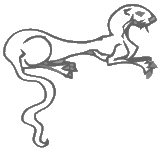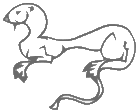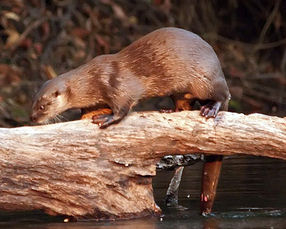 |
 |
 |
 |
 |
 |
 |
 |



Neotropical Otter
Size:
From nose to tail, the Neotropical Otter is 90 to 136 cm
long. The tail alone is 37 to 57 cm long.
Ecology Habitat: Almost all waters, including marine. Range/Distribution: South central America.
Natural predators are caimans, wild dogs, jaguars, anacondas, and birds of prey. Conservation Status: Threatened
Behavior Life Cycle: Male and female Neotropical Otters meet one day a year for breeding, and then go their separate ways. There is no regular mating season for Neotropical Otters, likely because the weather does not vary from season to season enough for it to matter. The pups are born fully furred in litters of two or three after a 56 day gestation period. They open their eyes at about 44 days old, leave the holt for the first time at 52 days, and begin joining their mother for short outings at about 74 days old. Holts are dug near a source of fresh water out of crevices in limestone, under fallen logs or large tree roots, or on rocky shorelines. Social: Unlike most other otter species, the Neotropical Otter is relatively solitary. Individual:
Spanish: Lobito de Rio, Mutria, Gato de
agua L. platenisis
Subspecies: There are three subspecies of the Neotropical Otter. The easiest way to tell them apart is by the shape of their noses.
|
OtterQuest (c) 1999-current. Contact OtterQuest.
A few images on this web site have been borrowed from other sources, I credit them in the Links/Resource Page. Some may not yet be credited, if you know the source of an uncrdited photograph, please e-mail me with the information. Thank you. Dana


 Identification
Identification


